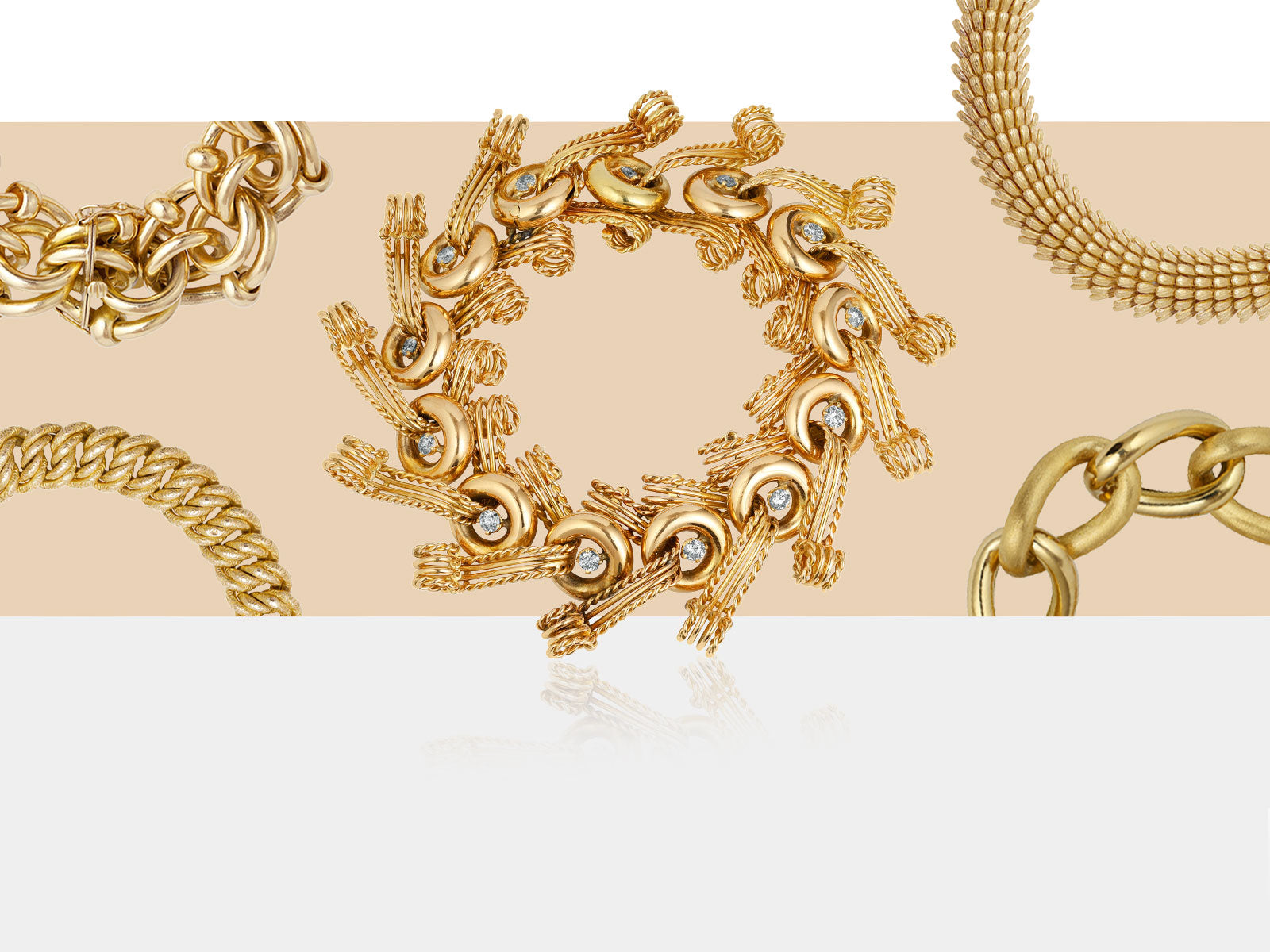

Vintage & antique bracelets
Vintage and antique bracelets
Vintage and antique bracelets from Lyppens jewellers
A work of art on your arm, a unique piece of jewellery with a special story. This is what makes vintage and antique jewellery so special. Lyppens jewellers represents a wide collection of unique vintage and antique jewellery. All jewellery is carefully inspected and, where necessary, restored by Lyppens' in-house workshop. This way you are assured of a qualitative and unique piece of jewellery.
Different style periods
The 19th century is the earliest style period in the collection. During this time a lot of unique bracelets were created and many still exist from this time period. Many of these items are made from rose cut diamonds or richly covered with enamel. The 19th century is largely known as the Victorian age. This is because of the long reign of Queen Victoria, the economic prosperity that England saw during this time and as a consequence the vast amount of stylistic items that were produced and exported. This period is sub categorised to 1830 – 1860 Early Victorian, 1860 – 1880 Mid Victorian and 1880 - 1900 Late Victorian.
The Flora and Fauna that categorised the Art Nouveau starts around 1890 up to the first world war. Parallel was the more traditional Belle Époque period. The Belle Époque is known for its rich use of platinum, diamonds and if colours were used, they were primary colours only.
The Art Deco period is known for creating some of the most beautiful bracelets. The style is known for its use of platinum and diamond in combination with geometric design. Lyppens jewellers offer many unique pieces of this style period.
The 1940’s and 1950's, also known as the Retro period, gave us one of the most iconic bracelets in history, known as the tank bracelet. A bracelet inspired by the tracks of a tank, something that was very well known to all at that time, after the experience of the two world wars.
The 1960’s and 1970’s are defined by the rich use of semi-precious coloured stones. This fitted in nicely with the Hippy culture of the day. Alongside this, goldsmiths often decorated plain gold necklaces with finishing techniques, such as matt gold, a combination of red and yellow gold in cables or with engravings.
